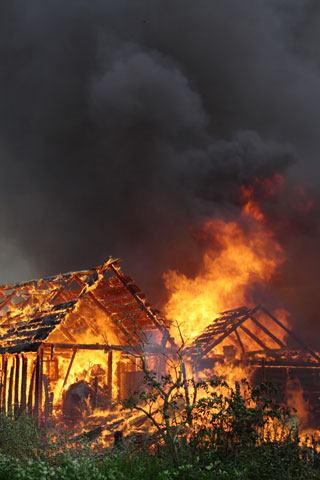In the last installment we discussed the need for a business continuity or disaster recovery plan for any organization or contact center that handles revenue critical work, in the office place.
Now we will focus in on a few best practices to ensure continuity in the event of a disaster, big or small.
First let’s start with the telecommunications component. Many organizations have voice T-1s or multiple T-1s running into their contact center or office environment. One thing your telecom provider can help you investigate is whether the building you inhabit has multiple fiber entrance points into the building. While certainly less common, it is fortunate when two local access providers (usually the incumbent telco or local exchange carrier (LEC) and a newer entrant into the dial tone market, the competitive local exchange carrier (CLEC) ) both run feeds into the same building at differing points. This stroke of luck allows an organization to use both local providers for the last mile on their T-1 circuits ideally running back to two unique long distance carriers in two different markets where their equipment resides. This dual redundancy allows for one local access provider and even one long distance provider, to completely lose service without severely impacting your organization. Any contact center would prefer to be down to half capacity rather than being 100% out of commission. This redundancy happens at the telecommunications infrastructure layer, but there are others to think about as well.
If your organization does not use voice T-1s but instead is using Voice over IP (VoIP) instead, an organization can similarly protect against a single point of failure at the network level by securing two internet connections or access points into multiple managed service providers handing their IP telephony needs.
Using different protocols can be a great point of disaster recovery. In my blogs I’ve spoken about both TDM, and the traditional telecommunications signaling protocol that has been around for decades and also VoIP which is the newer entrant to the telecom space. An organization could have voice T-1s and TDM signaled phones behind a legacy PBX as their primary mode of communications to the world and as a backup have VoIP hard phones or software based phones activated with current credentials that could be deployed should they lose their voice T-1s or even lose their PBX system due to card failure, power supply failure and so on.
Implementing the VoIP solution by having employees log into their softphone or plugging their VoIP hard phone into a data wall jack, they can begin taking calls as if nothing ever happened. Of course this assumes the contact center solution is still online at the premise, or better yet is a fully managed, multi-tenant SaaS solution offered by NICE Inc. Then you are sure to be able to use this method of back up since all of the auto attendant, call routing, screen pops etc. are handled in the cloud and not on premise.
Another form of redundancy is sending agents home to begin taking or making calls. Ideally the organization has already identified which employees have a robust home PC and high speed internet connection with appropriate VPN access to the network, or have roving lap top computers ready to dispatch to employees who can work from home, should facilities become unavailable in the traditional contact center.
Home agents have the ability to leave the impacted building or area of disaster and go to higher ground, or areas not impacted by the power outage etc. With the proper contact center solution that is easily ready to facilitate home agents, the organization can be back up and running in a very short time, with very little additional money spent.
Some or all of these methods can be deployed to ensure a better ability to keep agents on the phone in order to take orders or service customers.
Each organization should evaluate their unique situation to decide which business continuity plans is most appropriate for the kind of business being conducted. My advice is to make a plan and spend the money now, before a disaster situation occurs and it’s too late.




